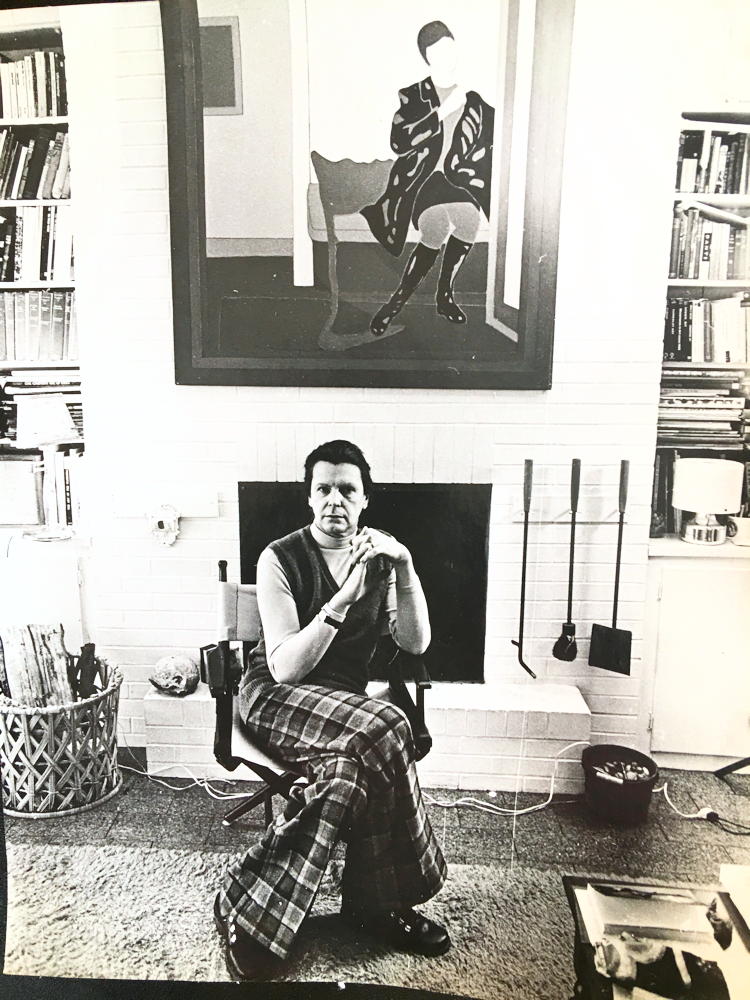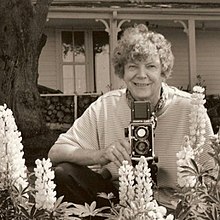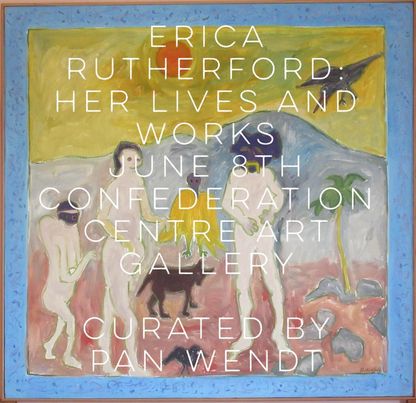
Ambika Gail became Erica’s partner in 1959. Their daughter is Susana Rutherford, who handles the estate and the art work. Gail and Susana live in Charlottetown and are preparing a large retrospective of Erica’s work which will open in June at the Confederation Centre Gallery and travel to museums in the Maritimes and Ontario.
Photo: Erica Rutherford, at home in Columbia, Missouri, 1976. The painting “The Coat” is one of a group of her works currently being shown in the Venice Biennale. Photo by Teresa Carpenter.
Erica Rutherford was a British-Canadian artist, filmmaker and writer. She received the Father Adrien Arsenault Senior Arts Award in 2001 and was elected to the Royal Canadian Academy of Arts in 1999.
Erica was born in the 1920s and although she felt quite sure she was in the wrong body, it was not something that people understood at that time. It was quite difficult for her to express the way she felt, and I think because she was used to feeling that she was hiding things, she was attracted to theatre, and playing different parts.

For a number of years she worked in theatre, both in acting and also in stage design and painting sets. Eventually her life took her to South Africa and she was the producer of African Jim / Jim Comes to Jo'burg, the first all black cast film made in South Africa employing Africans as actors. it was enormously successful and she made sure that it was shown to the population in the black townships so that they could all see themselves for the first time on the screen. In those years she also started painting more intensively.
When she returned to London she ended up actually owning and operating a boutique called Erica, featuring woman’s clothing where she could enjoy being the buyer. A friend who was her partner sold the clothes. She also started working at this time towards having an exhibition in London and had a one-person show there in the late fifties
When we went to live in Ibiza in 1959 she was working towards shows at the Leicester which was at the time a very well-known gallery. Her work developed slowly towards more personal images, which had something to do with the way she was feeling about her gender dysphoria. Her work moved from from abstract images which could have been landscapes, eventually adding symbols and figures and these figures developed.
By the time we we we were living in the States, she had moved to stronger colour in her work, and as she progressed in her feelings about the possibilities of actually changing gender, the images that are attracting interest now, began to arrive.
She was experimenting with the way that she could change and how she would appear in a different gender. There was an understanding and an experiment with what it would be like to live as fully female.
It's these works that are now attracting attention and have led to her work being shown at the Tate Britain and the Venice Biennale. They speak to how she was feeling at that time after so many years of living with all the pain and depression of being in the wrong body.

Eventually in her fifties, she did have surgery and was able to transition to living as female. In the early 90s, Erica wrote her autobiography, Nine Lives. After retiring to Prince Edward Island she continued her work with a series of paintings in which we are in a strange landscape with figures. The figures are are a curious mixture of animal and humanoid which seem to be telling stories or perhaps playing in an other world theatre.
Erica Rutherford: Her Lives and Works opens at the PEI Confederation Center on June 8. A catalog of the show will be published by the Center.
Information about the show may be found here.
Here is the Erica Rutherford Memorial Facebook Page.

